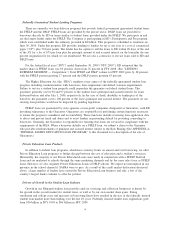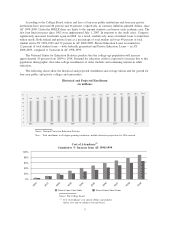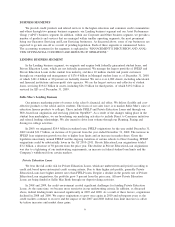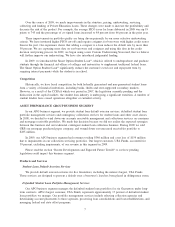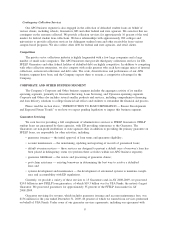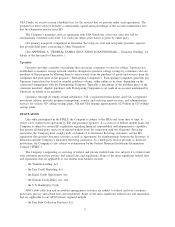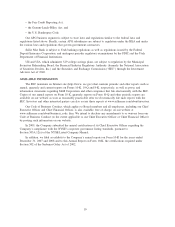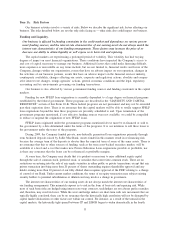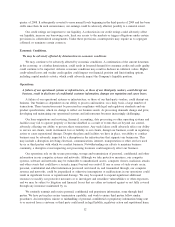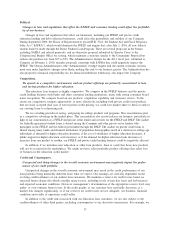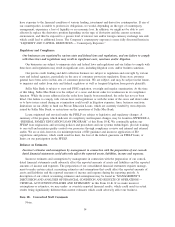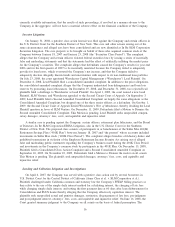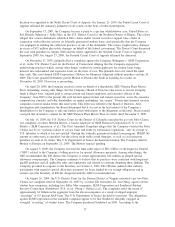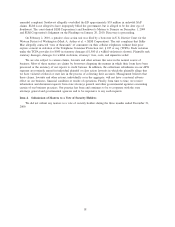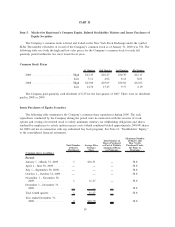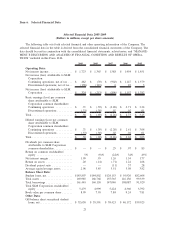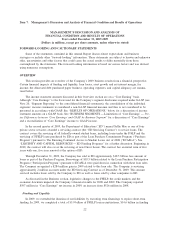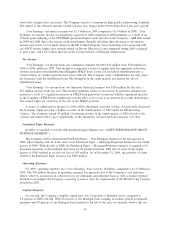Sallie Mae 2009 Annual Report Download - page 15
Download and view the complete annual report
Please find page 15 of the 2009 Sallie Mae annual report below. You can navigate through the pages in the report by either clicking on the pages listed below, or by using the keyword search tool below to find specific information within the annual report.have exposure to the financial condition of various lending, investment and derivative counterparties. If any of
our counterparties is unable to perform its obligations, we would, depending on the type of counterparty
arrangement, experience a loss of liquidity or an economic loss. In addition, we might not be able to cost
effectively replace the derivative position depending on the type of derivative and the current economic
environment, and thus be exposed to a greater level of interest rate and/or foreign currency exchange rate risk
which could lead to additional losses. The Company’s counterparty exposure is more fully discussed herein in
“LIQUIDITY AND CAPITAL RESOURCES — Counterparty Exposure.”
Regulatory and Compliance.
Our businesses are regulated by various state and federal laws and regulations, and our failure to comply
with these laws and regulations may result in significant costs, sanctions and/or litigation.
Our businesses are subject to numerous state and federal laws and regulations and our failure to comply with
these laws and regulations may result in significant costs, including litigation costs, and/or business sanctions.
Our private credit lending and debt collection business are subject to regulation and oversight by various
state and federal agencies, particularly in the area of consumer protection regulation. Some state attorneys
general have been active in this area of consumer protection. We are subject, and may be subject in the future,
to inquiries and audits from state and federal regulators as well as frequent litigation from private plaintiffs.
Sallie Mae Bank is subject to state and FDIC regulation, oversight and regular examination. At the time
of this filing, Sallie Mae Bank was the subject of a cease and desist order for weaknesses in its compliance
function. While the issues addressed in the order have largely been remediated, the order has not yet been
lifted. Our failure to comply with various laws and regulations or with the terms of the cease and desist order
or to have issues raised during an examination could result in litigation expenses, fines, business sanctions,
limitations on our ability to fund our Private Education Loans, which are currently funded by term deposits
issued by Sallie Mae Bank, or restrictions on the operations of Sallie Mae Bank.
Loans originated and serviced under the FFELP are subject to legislative and regulatory changes. A
summary of the program, which indicates its complexity and frequent changes, may be found in APPENDIX A,
“FEDERAL FAMILY EDUCATION LOAN PROGRAM” of this Form 10-K. We continually update our
FFELP loan originations and servicing policies and procedures and our systems technologies, provide training
to our staff and maintain quality control over processes through compliance reviews and internal and external
audits. We are at risk, however, for misinterpretation of ED guidance and incorrect application of ED
regulations and policies, which could result in fines, the loss of the federal guarantee on FFELP loans, or
limits on our participation in the FFELP.
Reliance on Estimates.
Incorrect estimates and assumptions by management in connection with the preparation of our consoli-
dated financial statements could adversely affect the reported assets, liabilities, income and expenses.
Incorrect estimates and assumptions by management in connection with the preparation of our consoli-
dated financial statements could adversely affect the reported amounts of assets and liabilities and the reported
amounts of income and expenses. The preparation of our consolidated financial statements requires manage-
ment to make certain critical accounting estimates and assumptions that could affect the reported amounts of
assets and liabilities and the reported amounts of income and expense during the reporting periods. A
description of our critical accounting estimates and assumptions may be found in “MANAGEMENT’S
DISCUSSION AND ANALYSIS OF FINANCIAL CONDITION AND RESULTS OF OPERATIONS —
CRITICAL ACCOUNTING POLICIES AND ESTIMATES” in this Form 10-K. If we make incorrect
assumptions or estimates, we may under- or overstate reported financial results, which could result in actual
results being significantly different than current estimates which could adversely affect our business.
Item 1B. Unresolved Staff Comments
None.
14


